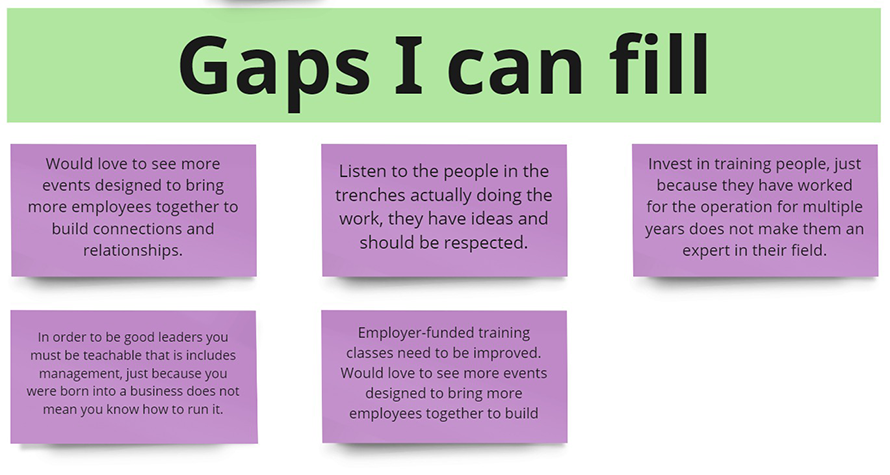Look for the gaps, not the niche
Discovering business gaps will allow you to understand what businesses you can serve and what their needs are.
I’m always told to know your customers’ needs and niche down on an aspect of that. Well, that’s great advice, but how do I find my customers’ needs or even who they are? This question has plagued me for the better part of 2 years now.
I’ve asked plenty of successful business owners, books on how to build a startup business, and I find most of the advice doesn’t help much past restating the question you just asked. I get the answers like, “well, you just do,” or they turn the question inward on itself, “well, what do you want to do?” Find the people that need that. ” Sounds great, but I’m still no closer to the answer than where I started.

I’ve finally found a tip that uses a free tool to help you start narrowing down who needs your help and what companies they work for by identifying questions and needs from their employees. This tip will be best suited for B2B organizations, but can still be useful for gathering useful information about any company.
There’s always a catch
Before you start, there are some things you need to know.
You need to know generally what you want to do. I know this sounds obvious, but “I want to help people”, won’t cut it. Something like, “I want to help businesses better solve problems by bringing out the best in their teams.” Still general, but better.
The next thing you need to know for this tool/tip to work is which industries you’re interested in. Don’t worry about niching down on this one just yet.
Sorry, but this tip will not provide you with a complete answer as to where you should focus your niche or who they are. I’m still on the lookout for that one. However, it’s a start.
Gathering insights with Glassdoor
Once you know the answers to these two questions, you can make use of this tip. Here’s how.
Glassdoor is the worldwide leader on insights about jobs and companies. If you know a company in the industry you want to work with search for it on Glassdoor. Go to the reviews section and begin to scan through the pros, cons, and advice to management under each review. Start to mark down the gaps you see in the company that your specific skill set matches. Copy the comments and save them to a document under “Gaps I can fill” and the company name.

When reading the comments, remember to proceed with caution. There will be a mix of happy workers who paint an overly perfect picture of the company and angry employees who want to vent. However, if you read through enough comments, you’ll notice a recurrent pattern of gaps being mentioned.

You can start to discover some of the pain points and gaps in a company without ever talking to anyone that works there. Better yet, the information won’t be filtered through management or HR because it comes straight from employees at almost every level.
Here are some examples of what you might find when reading through Glassdoor reviews:
“Listen to the people in the trenches actually doing the work. They have ideas and should be respected. “
“Would love to see more events designed to bring more employees together to build.”
The following comments are examples of business gaps that my skill set can help solve, they may not be ones for yours.
How to use the results from your research
When you look for gaps in a business’s services or ways to help improve the business model, you’ll have to come up with your own content angle that makes your angle stand out from the rest.

You now have enough knowledge to start developing problem-solving content that you can write about. This information will also help you sound informed and craft a more specific question to determine if you’re a good fit for the client when you get that first lead and follow-up call.
What this tip is good for:
- To get an idea of what the general company’s challenges are from an employee point of view.
- Giving you unique problems you can solve.
- Creating problem-solving content to write and post about
- This helps you understand where to best apply your talents per industry.
- It gives you a starting point to finally answer those annoying, unhelpful self-help business questions.
What this tip is not good for.
- Identifying the problem the company wants to fix.
- Identify if this is the niche you want to be in.
- Making it easier to write your sales pitch. (I was really hoping this would be good for this.)
In the end, this is a place to start to understand what challenges companies are facing and where you can step in and help. From here, you can start to craft an idea of what you want to do and for whom you can do it.

